
Lhasa Apso
![]()
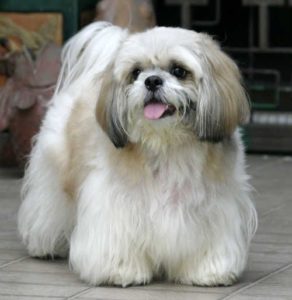
Lhasa Apso Dog Breeds Heavy head furnishings with good fall over eyes, good whiskers and beard; skull narrow, falling away behind the eyes in a marked degree, not quite flat, but not domed or apple-shaped; straight foreface of fair length. Nose black, the length from tip of nose to eye to be roughly about one-third of the total length from nose to back of skull.
Standing less than a foot high at the shoulder, Lhasa Apso Dog Breeds are small but hardy dogs of aristocratic bearing. They’re famous for a floor-length, flat-hanging coat, parted in the middle and draping each side of the body. A feathery tail curls over the back in the distinct manner of Tibetan breeds. The breed’s fans say the dark, oval-shaped eyes—peeping through lavish facial hair—are the windows of a Lhasa’s merry soul. The complete picture is unmistakably Asian: exotic, elegant, and serenely well balanced.
Reflecting his Tibetan heritage as an indoor sentinel on the Tibetan
Plateau, north of the Himalayan Mountains, the Lhasa Apso is a small, sturdy, well-balanced
rectangular dog of moderation possessing a level topline and a tail carried well over the back.
There should be neither exaggeration of any body parts nor hint of massive bone or body. A
distinguishing characteristic of the Lhasa Apso is its heavy, dense, double coat that is parted in
the middle from head to tail. In addition, the Lhasa Apso has good headfall and well-feathered
feet and legs as these features protected this small dog against extreme temperatures and the
rough terrain of his native land.
A Lhasa Apso is subject to the same requirement of soundness recommended for all breeds.
Structural faults are undesirable, regardless of whether or not such faults are specifically
mentioned in the standard. Any deviation from the ideal described in the standard should be
penalized to the extent of the deviation.
Reference - American Kennel Club
- Personality: Smart, confident, complex; a family comedian, but regally aloof with strangers
- Energy Level: Somewhat active; calm but fun-loving, Lhasas enjoy brisk walks and clowning for loved ones
- Good with Children: Better with older children
- Good with Other Dogs: With supervision
- Shedding: Infrequent
- Grooming: Weekly
- Trainability: Independent
- Height: 10-11 inches (male), slightly smaller (female)
- Weight: 12-18 pounds
- Life Expectancy: 12-15 years
Reflecting his Tibetan heritage as an indoor sentinel on the Tibetan Plateau, north of the Himalayan Mountains, the Lhasa Apso is a small, sturdy, well-balanced rectangular dog of moderation possessing a level topline and a tail carried well over the back. There should be neither exaggeration of any body parts nor hint of massive bone or body. A distinguishing characteristic of the Lhasa Apso is its heavy, dense, double coat that is parted in the middle from head to tail. In addition, the Lhasa Apso has good headfall and well-feathered feet and legs as these features protected this small dog against extreme temperatures and the rough terrain of his native land.
A Lhasa Apso is subject to the same requirement of soundness recommended for all breeds. Structural faults are undesirable, regardless of whether or not such faults are specifically mentioned in the standard. Any deviation from the ideal described in the standard should be penalized to the extent of the deviation.
Size:Variable, ideally between 10 and 11 inches at the shoulder. Bitches may or may not be slightly smaller but should possess feminine characteristics which easily distinguish females from males.
Head:Expression - Alert, thoughtful, intelligent. Heavy head furnishings enhance the proper Lhasa expression with good fall over eyes, good whiskers, and beard. Full depth of dark pigmentation on eye rims and lips is essential to achieve the desired softness of expression. Eyes - Dark brown, almond shaped. Round full eyes and very small sunken eyes are undesirable. Ears - Pendant, set slightly above eye level and carried close to the cheeks, heavily feathered. Skull - Narrow, falling away behind the eyes in a marked degree, not quite flat, but not domed or appleshaped. Stop - Moderate. Muzzle - Straight foreface of fair length with the length from tip of nose to eye to be roughly one-third the total length from nose to back of skull. A square muzzle is objectionable. Nose – Black. Bite - The preferred bite is either level or slightly undershot.
Neck, Topline, Body:Neck - Moderate in length, blending smoothly into the shoulders. Body – Rectangular when viewed in profile, with the length from point of shoulder to point of buttocks being longer than the height at withers. Chest of good depth extending to or slightly below the elbow. Prosternum well developed. Well ribbed up with the ribs extending well back towards hindquarters, strong loin, well-developed quarters and thighs. Topline - level from withers to croup, whether standing or moving. Tail - Well feathered and set sufficiently high to enable the tail to be carried well over the back in a curl lying to the side; there may be a kink at the end. Low carriage of stern is a serious fault. This means that when the Lhasa is moving, the tail is carried well over the back. A dropped tail while standing is not to be penalized.
Forequarters:Shoulders - Well laid back. Elbows close to the body. Shoulder blade and upper arm are ideally equal in length (i.e., length from point of withers to point of shoulder and point of shoulder to point of elbow should be equal.) Viewed from the front, the rib cage is oval in shape. Legs - Heavily furnished with hair. The legs are straight from elbow to pastern. The vertical distance from the withers to the elbow equals the distance from the elbows to the ground.
Pasterns -Strong, perpendicular. Dew claws - may be removed. Feet - Well feathered/heavily furnished, should be round and catlike, with good pads. The hair may be trimmed for neatness. Hindquarters: Well-developed rear assembly. Angulation of hindquarters should be in balance with forequarters to provide equal reach and drive. Legs - Heavily furnished with hair. Hocks - Well let down, set slightly behind the point of buttocks, perpendicular to the ground and turn neither in nor out. Feet – Same as forefeet.
Coat:Double coated, heavy, straight, hard, dense, not woolly or silky, of good length. Color: All colors equally acceptable.
Gait:The Lhasa Apso gait is smooth and effortless with good front reach and equally strong rear drive without any hint of wasted action. There is no tendency towards hackney, exaggerated lift or rolling. The rear legs reach under the body and push out well behind, carrying the body forward in balance with the front. Going away, the pads of the rear feet give evidence of good follow through, without exaggerated kickup. The legs move parallel coming and going with a tendency to converge to a centerline as the dog increases speed. The topline is level and the tail is carried well over the back and may drape to the side. A Lhasa is shown at its own natural speed, neither raced nor strung-up. It is unacceptable to reward a Lhasa that consistently moves with its tail down.
Temperament/Character:Alert and sensitive to their surroundings, Lhasas are usually gay and assertive but may be chary/aloof with strangers. Their regal attitude gives them an air of seriousness. The breed is extremely intelligent, charming and loyal.
Products
-
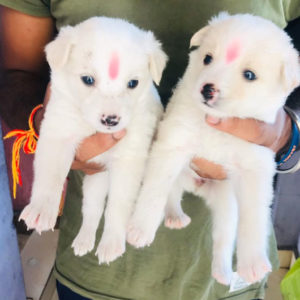 Pomeranian
Pomeranian
₹8,000Original price was: ₹8,000.₹7,500Current price is: ₹7,500. -
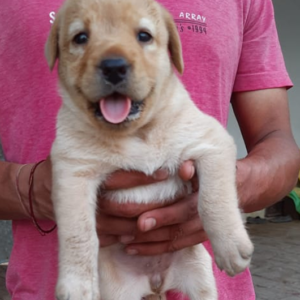 Golden Retriever
Golden Retriever
₹20,500Original price was: ₹20,500.₹20,000Current price is: ₹20,000. -
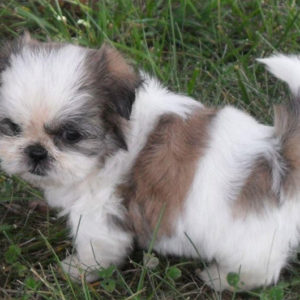 Shih Tzu
Shih Tzu
₹19,500Original price was: ₹19,500.₹19,000Current price is: ₹19,000. -
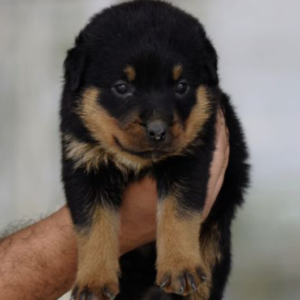 Rottweiler
Rottweiler
₹18,500Original price was: ₹18,500.₹18,000Current price is: ₹18,000. -
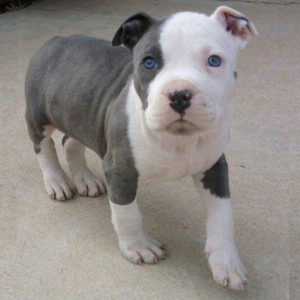 Pitbull
Pitbull
₹15,500Original price was: ₹15,500.₹15,000Current price is: ₹15,000.
